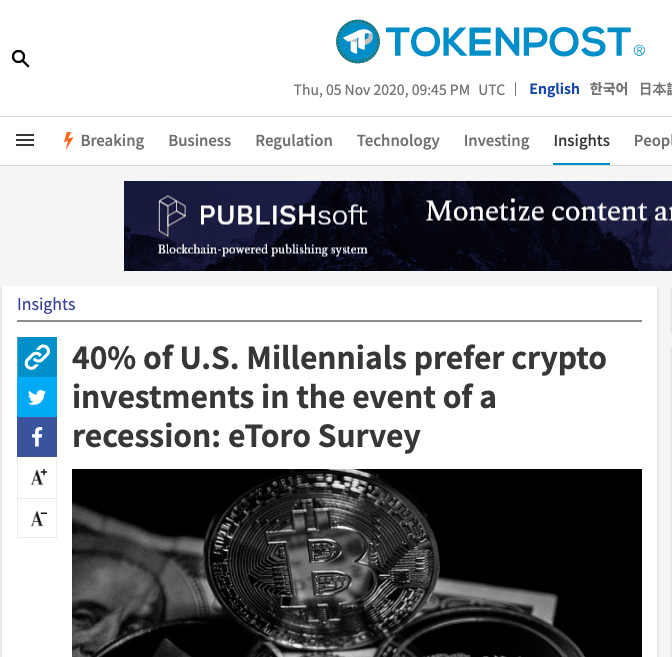Knowing your audience and prospects is a key way to improve your profitability! Different generations have different behaviors, attitudes, and preferences. Understanding the generation gaps will help you understand the needs of your customers. Generations give marketing strategists an easy way to target and focus their methods.
Baby Boomers do not want to see texting acronyms; they are swayed by clear video, they care about their in-store experiences, and they like to compare prices. On the other hand, Millennials want to care about the product they’re buying, and want to have a positive impact on their community. In addition, Generation Z (those born after Millennials and before 2010) is most influenced by social media, as that’s where they receive most of their news.
There is a new generation on the block! Brands need to know how this audience differs from their current audiences. Provoke Insights will be releasing a three-part blog series to help marketers understand the newest generation. Generation Alpha, the children of Millennials, are making waves recently in the news. Coupled with their Millennial parents, a marketing buzz has started to precipitate around the arrival of these youngsters. But how do they differ from their parents? In other words, what differences will there be in marketing to Generation Alpha versus marketing to Millennials?
Who is Generation Alpha?
Generation Alpha is the youngest generation on Earth. Alpha includes those born since 2010 and will include all of those with birthdays through the year 2025. The market has already been greatly affected by Generation Alpha. For instance, Alpha’s Millennial parents are pouring money into toys and tech for them, with $2 billion spent on startups in K-12 ed-tech. In addition, $11-13 billion has already been spent on advertising to children under 10 by the fast-food industry.
The impact that Alpha has on Millennial spending power has already been shown – 81% of Millennial parents say that their kids influenced their last purchase! So how will we differentiate between these children and adults?
Some Differences Between Generations
- Generation Alpha is going to be the most tech-literate generation ever, even more so than Millennials and Generation Z. Already, 31% of Alpha’s parents even believe that tech is more important to their kids than toys.
- Generation Alpha is going to watch the least television of any generation. As a result, this will affect television advertising even more drastically than Millennials have.
- Generation Alpha cares deeply about the opinions and actions of social media influencers. Not only that but the young generation actually has some social media influencers in it: the YouTube channel Ryan Toys Review features a seven-year-old named Ryan unboxing and reviewing Toys, and it already has 18+ Million subscribers on the video platform. Just imagine the impact of social media influencers as Alpha grow into young teens and adulthood. In contrast, a study found 78% of Millennials are not influenced by celebrity endorsements.
Start Making Changes Today
In conclusion, Generation Alpha is going to differ greatly from its Millennial parents. And the industry has already started to adjust accordingly. For example, there is an Alexa app that helps kids brush their teeth by playing songs and jokes to encourage it – Procter & Gamble’s Crest Kids, has taken the market by storm.
When working with a market research firm like Provoke Insights, it’s important to talk about targeting these two generations. In this case, Generation Alpha may be too young to fill out surveys, but secondary research can fill in the gaps in this new target market. And ask them to direct your team with a brand strategy regarding these two important generations of people.
Millennials are still a key market. But don’t forget about their children, as Generation Alpha is going to be the future!
Check out some of our most recent posts from our strategy and advertising research blog here:
- Blockchain & the Markest Research Industry
- Is Your Research Stuck in the 1980s: Update Your Brand Tracker!
- Market Research Doesn’t Need to Be Boring: Improve Data Visualization
- Tips For Building Brand Strategy for a Successful Brand
- What’s the Difference Between Quantitative and Qualitative?
Sign up for our newsletters here!
Follow our social media accounts:
Twitter: https://twitter.com/provokeinsights
Facebook: https://www.facebook.com/provokeinsights/
LinkedIn: https://www.linkedin.com/company/provoke-insights
Check out our most recent features in the news media:
September 11th, 2019: 40% of U.S. Millennials prefer crypto investments in the event of a recession: eToro Survey
July 31st, 2019: Jewelry Is About to Get its Own ‘Got Milk’ Ads
July 1st, 2019: 22 Top Advertising Research Companies 2019
Keep on the lookout for more blog posts from us!
Provoke Insights is a full-service market research firm. We help build and grow brands using multiple market research methodologies including qualitative, quantitative, and secondary research. We hope to work with you in the future.














